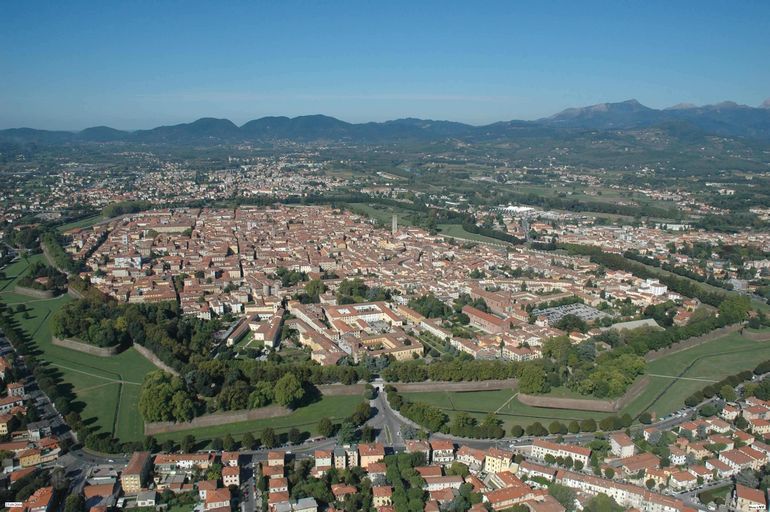
Stage 5
Genova > Lucca
Starting in Genoa
Have a walk along the carruggi, those alleyways just behind the harbour where the heart of Genoa has been beating for ages; check out the extraordinary Palazzi dei Rolli, which have been included in the Unesco World Heritage list; don’t miss the world-famous Aquarium. Genoa offers plenty of excuses to stay a little longer. But the Giro doesn't allow too much time, so one should take note and return as soon as possible. The goal of the day is to anticipate the pack, so plan your time well for a few visits to the locations crossed by the stage.
Following the Aurelia state road, we first reach Recco (where a stop in search of the most famous focaccia in Liguria simply cannot be avoided) and immediately afterwards Camogli, also known as "the city of a thousand white sailing ships", in memory of the period when it was home to numerous ship-owners, but which today dazzles with the colourful facades of the houses surrounding the port. Then there is Rapallo, which, just behind the waterfront, preserves its medieval layout and boasts a 16th-century castle that seems suspended over the water. And then Zoagli, Chiavari, Lavagna and the sophisticated and refined Sestri Levante.

Marbles and "Testaroli"
Here, we temporarily wave goodbye to the sea and head up the Bracco Pass to discover the Val di Vara with its array of historic villages. Past Santo Stefano Magra is Sarzana, with its unmistakable profile characterised by two manors: the Fortezza Firmafede, completed in 1492 and recently brought back to life; and the Fortezza di Sarzanello. But here we must also find time for a plate of testaroli, the flagship of Lunigiana cuisine.
We head back to the sea by first passing through Carrara and Massa, the cities of the marble extracted from the Apuan Alps. A visit to the quarries requires a slight diversion: from Carrara we reach the famous Fantiscritti quarries, whose knowledge is combined with that of the nearby Colonnata, cradle of the exquisite Lardo aged in marble basins.
Next stop is Pietrasanta, a town of art and artists. The Cathedral of San Martino in Romanesque-Renaissance style and the ateliers of the many sculptors and painters who have chosen to live and work here - in the wake of the likes of Botero, Mitoraj, Joan Mirò, Pietro Cascella, Arnaldo and Giò Pomodoro - simply cannot be missed. Then comes Camaiore, where we can admire the Longobard Abbey of San Pietro (8th century) and the 13th-century Collegiate Church of Santa Maria Assunta.

On the walls of Lucca
The short climb to Montemagno leads to the long final sprint.
Lucca is one of those cities that are truly worth the journey. A tour of the Walls that surround the historic centre is a must. The fortified ring measuring 4,200 metres can also be cycled and is equipped with a lighting system that makes it accessible even after sunset. Beautiful panoramic views can also be enjoyed from the Torre delle Ore, whose summit can be reached by climbing 207 steps, and from the Guinigi Tower, rendered unmistakable by the seven holm-oak plants growing on its summit. On the other hand, Wearing the Pink, the event dedicated by the municipality of Lucca to the Giro d'Italia, is at ground level. It consists of an exhibition created by Karl Kopinski, dedicated to the international champions, and 12 inflatable spheres installed around the city.
























